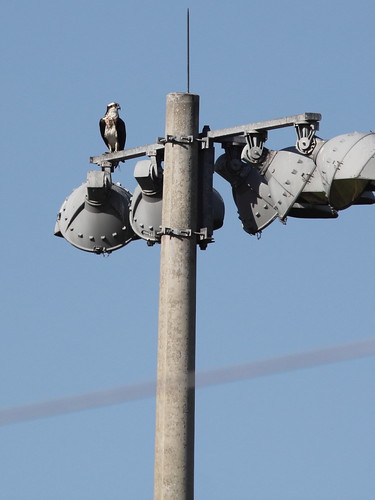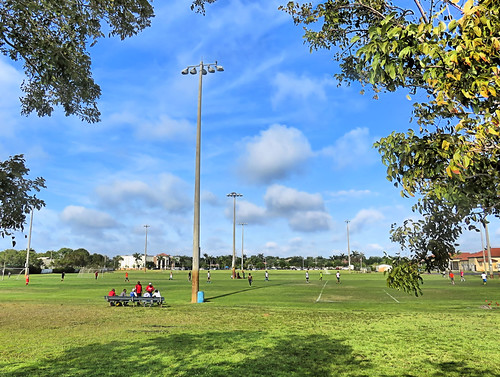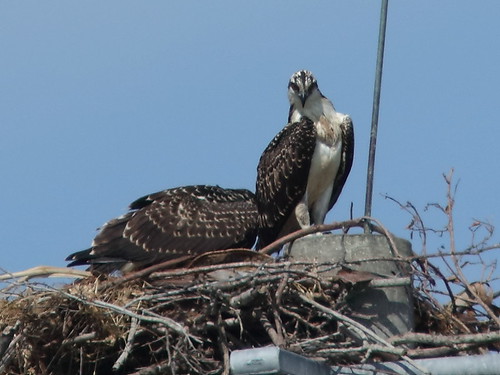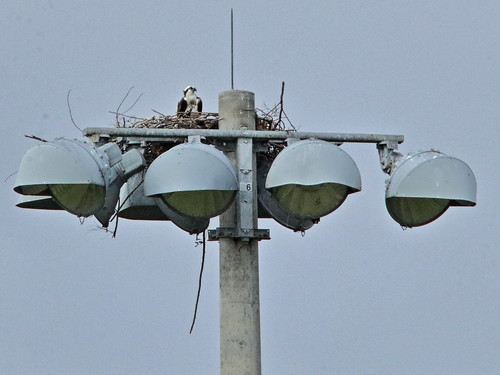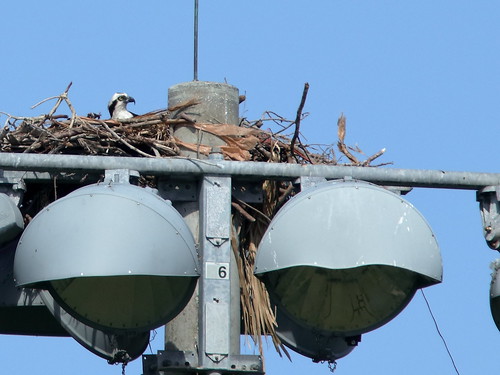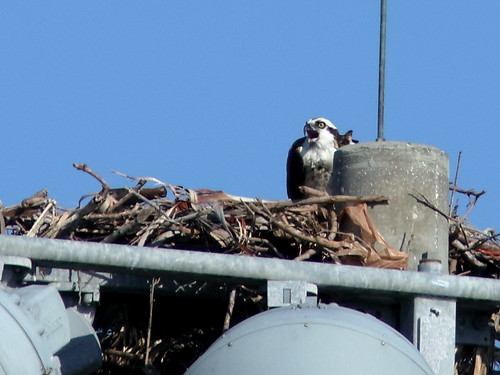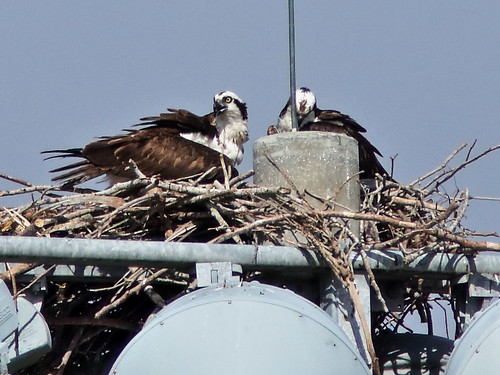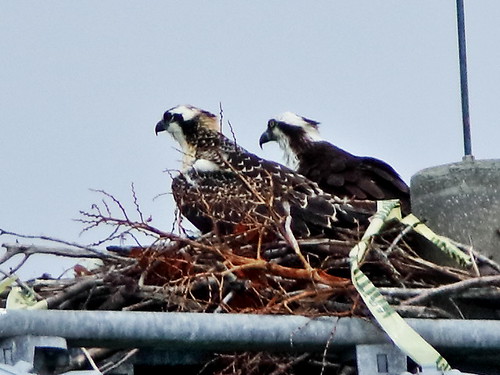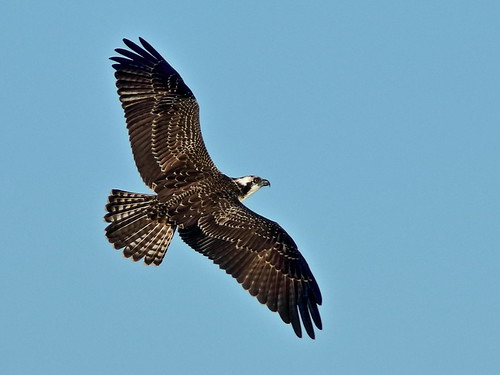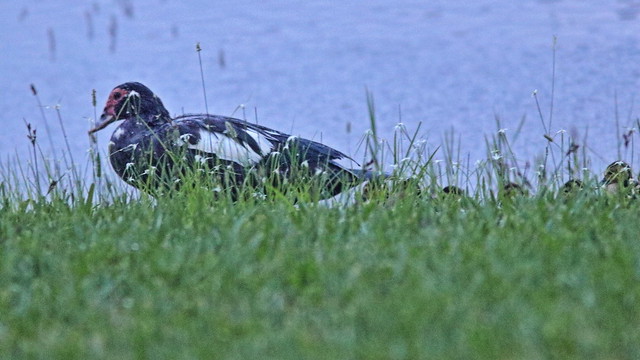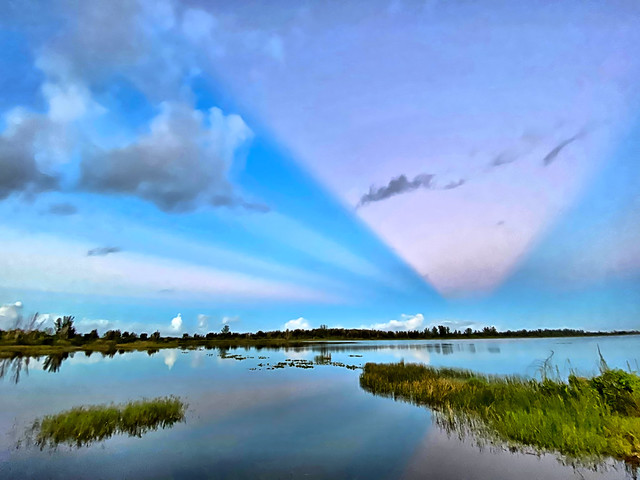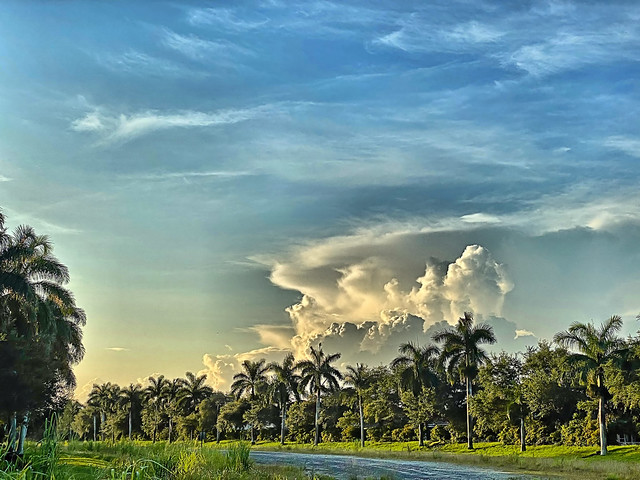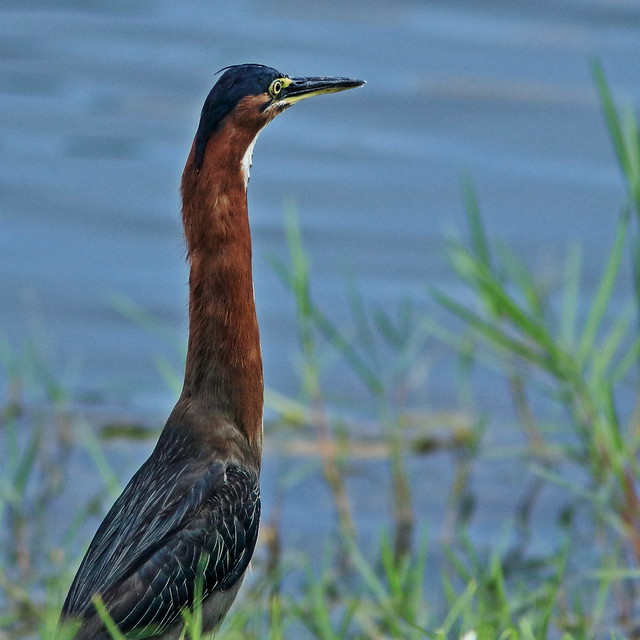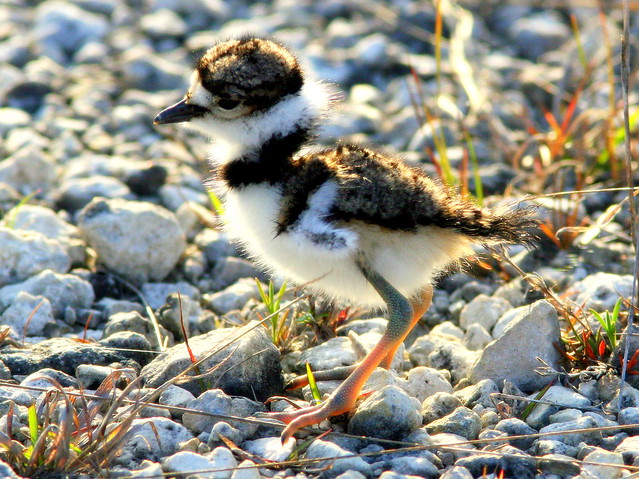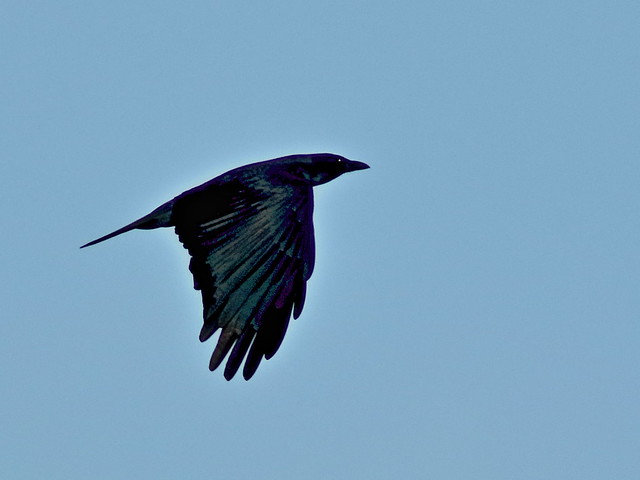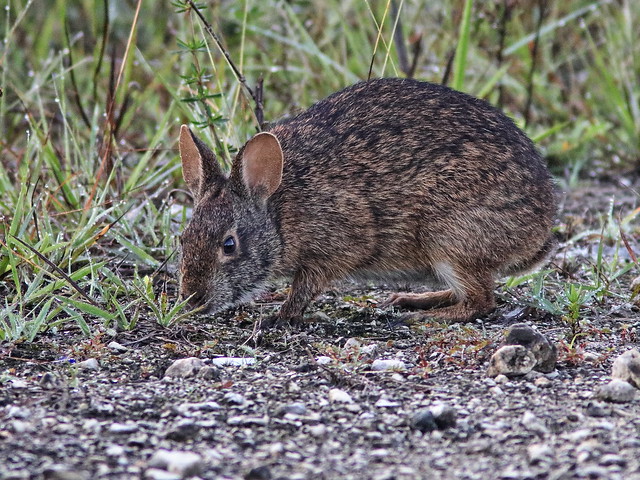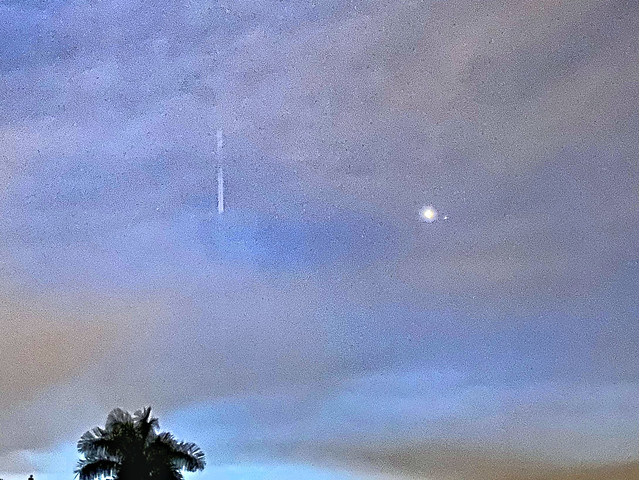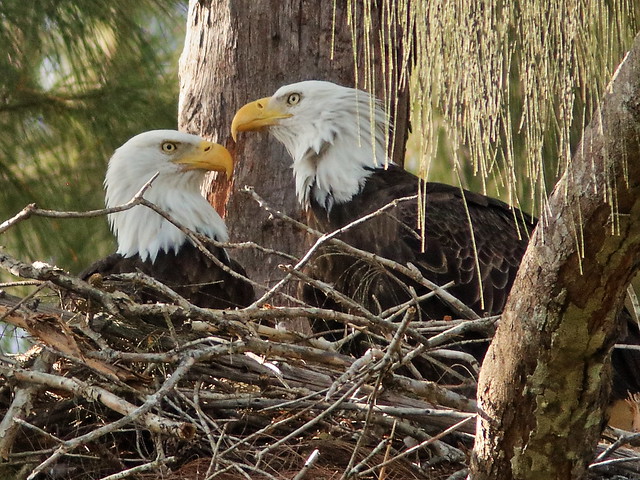

The nest on November 2:

Both members of the pair spent much time on the nest. (November 24). Jewel is on the left:

They copulated, this time on November 26:

Their first clutch was laid in late November and was expected to hatch in early January, 2020.
The pair exchanged incubation duties. Here, the male is waiting to replace Jewel who is about to fly off (December 7):

Jewel departs and turns over incubation duties:
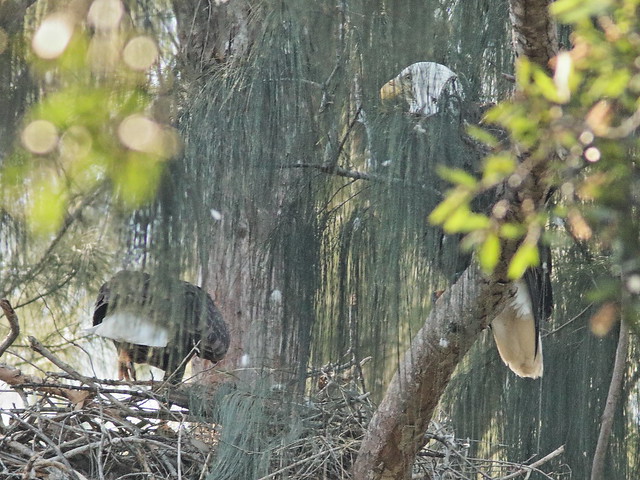
There was visual and photographic evidence of at least one eaglet being fed in the nest just before a storm on January 4. The storm was fierce and caused wind damage and at least one tornado. The next day some observers believed that the adult was feeding one or more eaglets, but there were no confirmed sightings. Another bad storm occurred on January 10.
In between the storms the adults were busy repairing the nest, which lost a considerable amount of its bulk, especially on the right (west) side. We presumed that the eaglet(s) and any unhatched eggs were lost between January 4th & 10th. Pride & Jewel repairing nest (January 11, 2020):

They repaired the nest and were seen copulating in late January. A second clutch of eggs was deposited in mid-February, and there was evidence that the first egg had hatched on or about March 14. Two eaglets hatched, the 24th and 25th eaglets known to have been produced in this nest since South Florida Audubon began monitoring the nest in 2007. The same male (Pride) has been present since then, and Joy was his first mate. She disappeared in October, 2014 and soon was replaced by Jewel, a young (4 year old) female.
Here are both eaglets on April 8, 2020, when they were about 3 1/2 weeks old. The younger male, standing high on the right, still has a tuft of natal down on his head:

This is the first-hatched eaglet (P Piney 24), presumably a female, on April 11. Bald Eagle eggs are deposited every 2-3 days and hatch asynchronously. Two out of every three first-hatched are females:

Female eaglets grow rapidly and are very competitive with nest-mates. If the second-hatched is also female, they will fight for dominance and often the younger bird either starves or may be killed by her sibling. A younger male will usually not challenge an older female, so this is the best combination for survival of both if food is abundant.
Both eaglets were loafing out on the branches on June 26, when they were about 15 weeks (105 days) old. The male, in the foreground has darker feathers than the female:

The darker plumage of the male is an individual variation, not linked to its gender, so far as I can determine:

Note the more massive head of the female. The large bill, more prominent "brow." and the greater extension of the gape (corner of beak) below her eye is characteristic of female Bald Eagles:

As is usually the case, the female was first to fledge, taking her first flight on May 21 at the age of 68 days. She disappeared until May 30. The male fledged on June 3 and returned to the nest the next day. They will come to the nest to be fed by the parents. The adults deposit prey into the nest to attract the eaglets, a practice which most efficiently allows them to feed and protect them in one location. For several weeks they will accompany the adults on foraging trips as they gain hunting skills.
Here is a Link to spreadsheet which tracks events at the nest over the past 11 breeding seasons:
http://www.rosyfinch.com/EagleMilestonesSheet.pdf
Meanwhile, out on the local wetlands, a male Bobcat walked along the edge of the gravel path. He was quite distant and I got poor photos, so I stitched them together into a composite image which shows him progressing along. He looked back at me and then continued on his way:.


Great Egret at the shore of our lake:
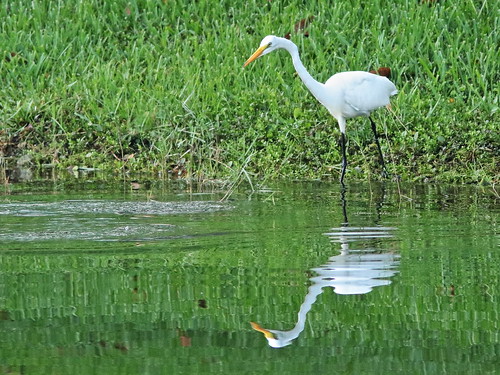
Storm trying to beat us to our home:

= = = = = = = = = = = = = = =
Linking to:
Skywatch Friday
Weekend Reflections
Saturday's Critters
BirdD'Pot
Camera Critters
All Seasons
Wordless Wednesday (on Tuesday)
Natasha Musing
Our World Tuesday
________________________________________________
Please visit the links to all these posts to see some excellent photos on display
________________________________________________

